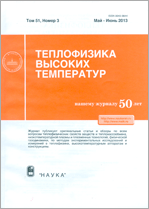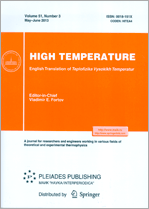|
This article is cited in 4 scientific papers (total in 4 papers)
Thermophysical Properties of Materials
The theory of a metal-insulator transition at zero temperature and features of the dielectric function in the Coulomb model of matter
V. B. Bobrovab, V. Ya. Mendeleyevb, S. A. Triggercb, G. J. F. van Heijstc, P. P. J. M. Schramc
a National Research University “Moscow Power Engineering Institute”, ul. Krasnokazarmennaya 14, Moscow, 111250, Russia
b Joint Institute for High Temperatures, Russian Academy of Sciences, ul. Izhorskaya 13/19, Moscow, 125412, Russia
c Eindhoven University of Technology, P.O. Box 513, MB 5600, Eindhoven, The Netherlands
Abstract:
A metal-insulator transition at zero temperature for a material that is a quantum nonrelativistic Coulomb system of electrons and nuclei of one type has been considered in analyzing the features of the dielectric function beyond the adiabatic approximation for nuclei. It has been found that the isothermal compressibility of the material diverges at the metal-insulator transition. The static conductivity vanishes because the screening length of the Coulomb interparticle interaction in the “true” dielectric state is larger than any characteristic size and the screening effect is reduced to only a change in the interaction amplitude. In the presence of the density range corresponding to the true dielectric state, the material is highly probable in the self-compressed state characterized by zero pressure. The possibility of the description of such a state in the adiabatic approximation for nuclei of the material has been considered using the virial theorem.
Received: 06.08.2012
Citation:
V. B. Bobrov, V. Ya. Mendeleyev, S. A. Trigger, G. J. F. van Heijst, P. P. J. M. Schram, “The theory of a metal-insulator transition at zero temperature and features of the dielectric function in the Coulomb model of matter”, TVT, 51:4 (2013), 511–519; High Temperature, 51:4 (2013), 457–464
Linking options:
https://www.mathnet.ru/eng/tvt105 https://www.mathnet.ru/eng/tvt/v51/i4/p511
|


|





 Contact us:
Contact us: Terms of Use
Terms of Use
 Registration to the website
Registration to the website Logotypes
Logotypes








 Citation in format
Citation in format 
